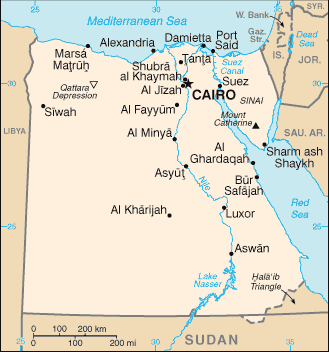Mike Coston is the Owner/Editor of Avian Flu Diary
We’ve news of a human H9N2 infection in Aswan, as well as a bit of confirmation of our H5N1 count for Egypt this year, courtesy of the latestFAO/EMPRES Animal Influenza Update # 636 and a head’s up overnight to FluTrackers and myself by @nlintelligence (see FluTrackers post)

First the H9N2 case, which is described as:
10/02/2015 – H9N2 infection in a human, Aswan
Source: National AuthoritiesOn 10 February 2015, a human case of A (H9N2) influenza was detected by the routine national avian influenza surveillance system in Aswan Governorate. The case was a 3 years old male, avian influenza was suspected on 16 January 2015. Samples tested at Aswan subnational laboratory and subsequently the reference laboratory (NAMRU3) were positive for H9N2 Investigations revealed that the case had a history of contact with apparently healthy backyard poultry. H9N2 positive poultry has been detected in Egypt since 2011, yet this is the first confirmed human case.
Although ubiquitous in Asian poultry, and endemic in Egyptian poultry as well, H9N2 has only rarely been reported in humans. We’ve seen it reported a handful of times, including in Hong Kong in 1999 (2 cases), 2003 (1 case), and 2007 (1 case), and most recently in December of 2013 (see Hong Kong: Isolation & Treatment Of An H9N2 Patient).
Several additional human H9N2 virus infections were reported from China in 1998-99, and all known cases were mild. More recently, in 2011 we learned Bangladesh To Share H9N2 Bird Flu Virus after detecting a case there.
Since the virus is most common in areas where testing and surveillance are less than optimal, we really don’t know how many people end up infected by it. Most cases are mild, and would be indistinguishable from ordinary flu.
Although viewed as having at least some `pandemic potential’ (see H9N2: The Other Bird Flu Threat), perhaps more importantly H9N2 appears to play a central role in the evolution of other HPAI viruses, including H5N1, H7N9, H5N6, and H10N8.
All of which share several important features, which we’ve discussed previously.
- They all first appear to emanate from Mainland China
- They all appear to have come about through viral reassortment in poultry
- And most telling of all, while their HA and NA genes differ – they all carry the internal genes from the avian H9N2 virus
The avian H9N2 virus – unlike the H5 and H7 avian viruses – is not considered a `reportable’ disease by the OIE since it is viewed as a relatively stable LPAI (Low Pathogenic Avian Influenza), not prone to evolving into a more dangerous HPAI form.
Also included in this FAO/EMPRES report is an update on human H5N1 cases in Egypt, and that – combined with another FAO/EMPES document posted by Flutrackers this morning – appears to corroborate our ongoing count of H5N1 cases for the year.
29/01/2015 to 05/02/2015 – H5N1 infections in humans,
Behera, Cairo, Giza, Dakahlia, Fayoum, Iskandariyah, Menia,
Menoufia, Qina, Sharkia, Sohag and Sharkia Governorates
Source: National AuthoritiesAccording to the Ministry of Health, between 9 January and 2 February 2015, 22 new human cases of H5N1 infection were detected of which three have been fatal:
– Cases were reported in 13 out of Egypt’s 27 governorates namely: Alexandria (1), Behera (2), Cairo (3), Dakahlia (1), Fayoum (1), Giza (2), kalyoubia (2), Menia (2), Menoufia (2), Qena (1), Sharkia (3), Sohag (1) and Suez (1);
– Patients affected are aged between 1.6 and 75 years old, 9 of them are children;
– All cases, except one, whose source of infection is still under investigation, had contacts with backyard or market poultry few days prior to illness. Of the 254 confirmed human cases in Egypt since 2006, 93 were fatal, and at least 233 cases had contact with domestic poultry
Sharon Sanders has updated her FluTrackers 2015 Global WHO & Ministries of Health Confirmed H5N1 Human Cases List, which now shows 49 H5N1 cases for the year in Egypt.


One thought on “Egypt reports human H9N2 avian flu, H5N1 count nears 50”